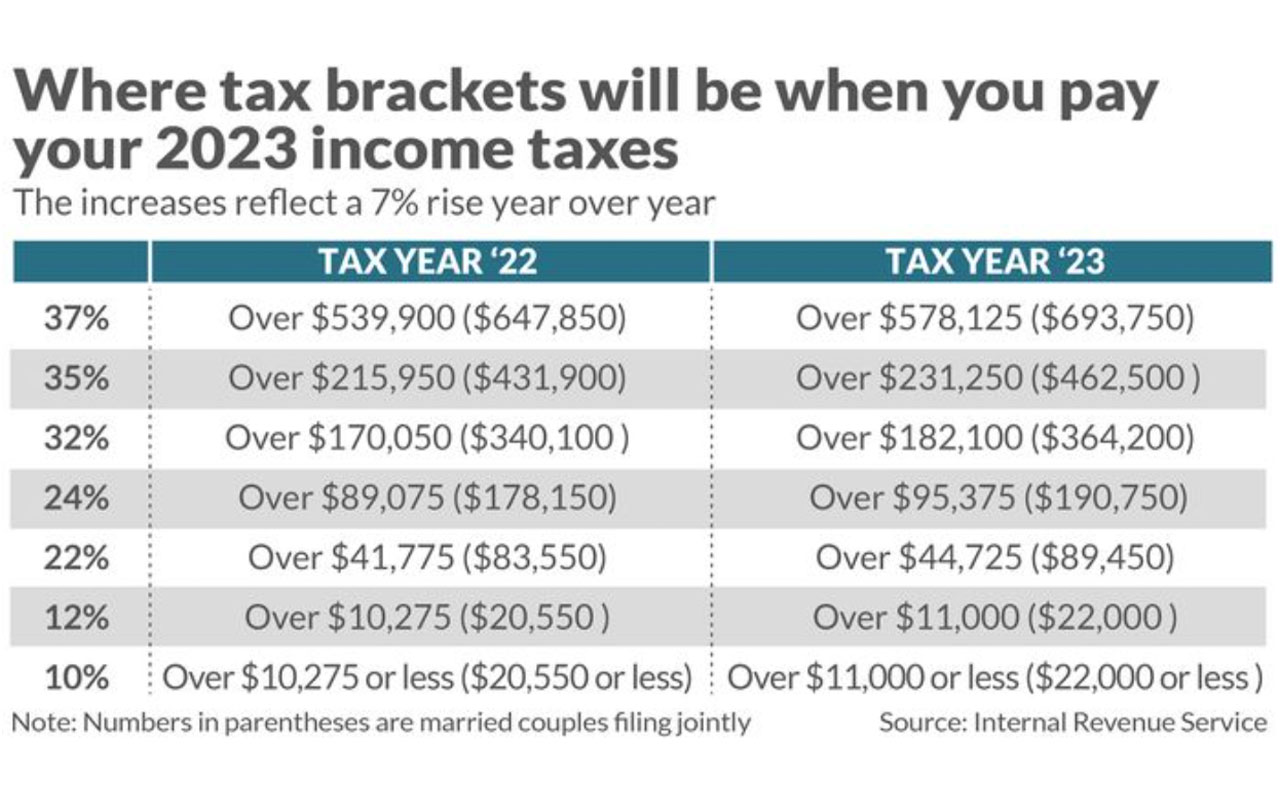Inflation Action Alert! Anticipate These Changes to 2023 401k Limitations & Tax Brackets
The Internal Revenue Service recently announced significant changes to the amount individuals can contribute to their 401(k) plans in 2023. The IRS also issued technical guidance regarding cost-of-living adjustments affecting tax brackets, the standard deductions and other retirement-related items for tax year 2023.
Highlights of retirement contribution changes for 2023
The contribution limit for employees who participate in 401(k), 403(b), most 457 plans, and the federal government's Thrift Savings Plan is increased to $22,500, up from $20,500.
The limit on annual contributions to an IRA increased to $6,500, up from $6,000. The IRA catch up contribution limit for individuals aged 50 and over is not subject to an annual cost of living adjustment and remains $1,000.
The catch-up contribution limit for employees aged 50 and over who participate in 401(k), 403(b), most 457 plans, and the federal government’s Thrift Savings Plan is increased to $7,500, up from $6,500. Therefore, participants in 401(k), 403(b), most 457 plans, and the federal government's Thrift Savings Plan who are 50 and older can contribute up to $30,000, starting in 2023. The catch-up contribution limit for employees aged 50 and over who participate in SIMPLE plans is increased to $3,500, up from $3,000.
The income ranges for determining eligibility to make deductible contributions to traditional Individual Retirement Arrangements (IRAs), to contribute to Roth IRAs, and to claim the Saver’s Credit all increased for 2023.
Taxpayers can deduct contributions to a traditional IRA if they meet certain conditions. If during the year either the taxpayer or the taxpayer’s spouse was covered by a retirement plan at work, the deduction may be reduced, or phased out, until it is eliminated, depending on filing status and income. (If neither the taxpayer nor the spouse is covered by a retirement plan at work, the phase-outs of the deduction do not apply.)
Here are the phase out ranges for 2023:
For single taxpayers covered by a workplace retirement plan, the phase-out range is increased to between $73,000 and $83,000, up from between $68,000 and $78,000.
For married couples filing jointly, if the spouse making the IRA contribution is covered by a workplace retirement plan, the phase-out range is increased to between $116,000 and $136,000, up from between $109,000 and $129,000.
For an IRA contributor who is not covered by a workplace retirement plan and is married to someone who is covered, the phase-out range is increased to between $218,000 and $228,000, up from between $204,000 and $214,000.
For a married individual filing a separate return who is covered by a workplace retirement plan, the phase-out range is not subject to an annual cost-of-living adjustment and remains between $0 and $10,000.
The income phase-out range for taxpayers making contributions to a Roth IRA is increased to between $138,000 and $153,000 for singles and heads of household, up from between $129,000 and $144,000.
For married couples filing jointly, the income phase-out range is increased to between $218,000 and $228,000, up from between $204,000 and $214,000.
The phase-out range for a married individual filing a separate return who makes contributions to a Roth IRA is not subject to an annual cost-of-living adjustment and remains between $0 and $10,000.
The income limit for the Saver’s Credit (also known as the Retirement Savings Contributions Credit) for low- and moderate-income workers is $73,000 for married couples filing jointly, up from $68,000; $54,750 for heads of household, up from $51,000; and $36,500 for singles and married individuals filing separately, up from $34,000.
The amount individuals can contribute to their SIMPLE retirement accounts is increased to $15,500, up from $14,000.
The IRS Raises 2023 Standard Deduction & Tax Brackets 7 Percent
The IRS has also increased the size of the standard deduction when workers file their taxes on their 2023 income, by the largest amount in nearly four decades in response to historic inflation.
Here are the details:
The standard deduction for individuals and married people filing separately will be $13,850 for the 2023 tax year. That’s a $900 increase from the $12,950 standard deduction for the upcoming tax season.
For married couples filing jointly, the increase is to $27,700 for the 2023 tax year. That’s a $1,800 increase from the $25,900 standard deduction set for the upcoming tax year.
The increases in the marginal tax rates reflect the same 7% rise. For example, the 22% tax bracket for this year is over $41,775 for single filers and over $83,550 for married couples filing jointly.
If you have any questions, please contact us.

Next year, the same 22% bracket applies to incomes over $44,725 and over $89,450 for married couples filing jointly.
The child tax credit is another example of tax changes due to inflation. While the credit remains unchanged at $2,000, the credit’s refundable portion climbs from $1,500 to $1,600 during tax year 2023.
For more information, contact our tax team. We can help you plan for these changes and your end of year taxes, too.

